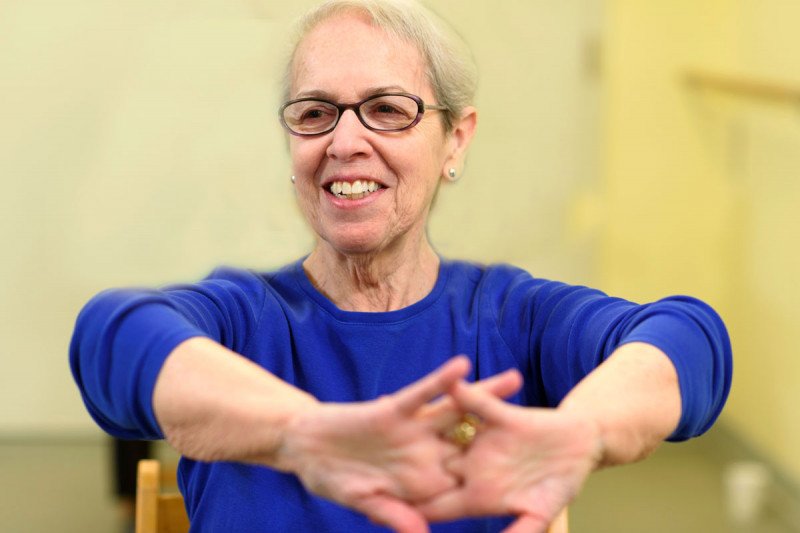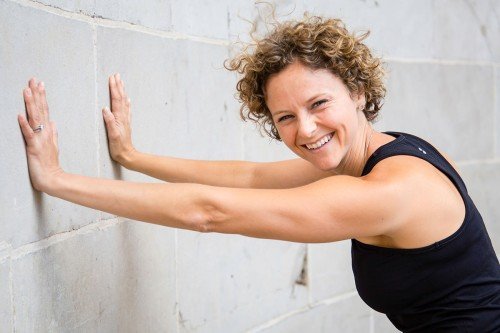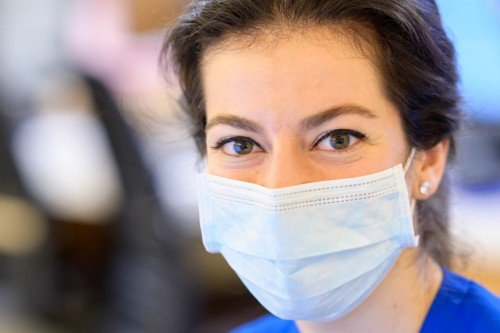
People with cancer have many ways to stay active while sheltering at home.
Even if you and your family have been vaccinated against COVID-19, you may not feel comfortable heading back to the gym just yet. But it’s important for people with cancer and cancer survivors to stay active.

Kylie Rowed
According to Kylie Rowed, an exercise physiologist at Memorial Sloan Kettering, exercise has been shown to have major benefits for people being treated for cancer as well as for cancer survivors. Research suggests that in addition to enhancing physical and mental health, exercise can help minimize the long-term effects of cancer treatments.
Ms. Rowed works with people with breast cancer and shares her tips and guidelines for keeping active while staying safe at home.
How much exercise is best for people with cancer and survivors?
One important thing I tell people to keep in mind as they make an exercise plan is to be aware of any physical limitations they may have. This can be due to cancer or cancer treatment, or from having another health problem or injury. If you are starting a new exercise program, be sure to check with your doctor first. This is especially important if you are at risk for falling due to your age, medications, or neuropathy (nerve damage that causes numbness or weakness).
I know it’s hard to exercise at home, but here is what I recommend for people with cancer. I’m also including a sample workout plan for one week.
There are two main types of exercise. Aerobic exercise helps the heart and lungs (what’s known as the cardiorespiratory system). Resistance exercise focuses on strengthening muscles, bones, and joints (the musculoskeletal system). For both types, I make recommendations based on guidelines from the American Society of Clinical Oncology and the American College of Sports Medicine. They mix exercises of medium intensity and high intensity. (Medium intensity means you should be able to carry on a conversation while doing it but would have difficulty singing. High intensity means you would likely have difficulty carrying on a conversation or singing.)
For aerobic exercise, I recommend you:
- Do it at least three days a week.
- Have it be medium to high intensity.
- Have each session last 30 to 60 minutes.
For resistance exercise, I recommend you:
- Do it two or three days a week.
- Have it be medium to high intensity.
- Do two sets of 12 to 15 repetitions for each activity.
What are some exercises you do?
I try to do a variety of aerobic and resistance exercises, both indoors and outdoors when possible.
Indoor Exercises
Aerobic: If you have equipment, such as a treadmill, exercise bike, or elliptical machine, you can follow the above exercise guidelines for good heart and lung health.
If you don’t have access to indoor equipment, you can do simple activities, such as jogging in place, doing jumping jacks, jumping rope, and doing squats. There’s a video people can watch by Donna Wilson, an MSK clinical nurse specialist, that shows how to do a lot of indoor aerobic exercises.
Resistance: If you have home weight training equipment, you can follow the resistance guidelines I mentioned to keep your muscles strong. Even without home equipment, there are lots of body-weight resistance exercises you can do, such as push-ups, leg lifts, and planks.
Outdoor Exercises
People with cancer need to be especially mindful of avoiding infections, as they often have weakened immune systems. But it is still possible to exercise outdoors. Just remember to always keep a safe separation from others.
Aerobic: Some outdoor aerobic exercises include walking, running, and biking. There are several free walking apps that can help you with outdoor aerobic activities, including finding good routes.
Resistance: Many of the resistance exercises you can do indoors, such as leg lifts and planks, can also be done outdoors.
MSK has extensive information about exercise — both indoor and outdoor — on its website.
How can people start exercising and stay motivated?
For people with cancer, the idea of exercise can seem daunting. But here are some tips to increase your chances for sticking with it:
-
Break it up. Start with multiple smaller sessions — 10 to 15 minutes — of aerobic exercise throughout the day to achieve your total goal of 30 to 60 minutes.
-
Consider starting slow. Begin with lower-intensity exercises to see what you can tolerate.
-
Listen to your body. Take breaks when you need to, especially if you feel any pain or dizziness.
-
Push forward. To progress, try to increase time, distance, and intensity for aerobic exercise, and increase repetitions and weight for resistance training.
-
Keep track. Schedule and record your exercise in a calendar. This can be very motivating as you see improvements in your cardiovascular health and your strength, which allows you to do even more over time.
-
Make it fun. Work out with friends through video chat!
Sample Exercise Plan
Here is a typical at-home exercise plan I’d recommend for people with cancer:
Monday
- Aerobic training, such as a 30-minute walk at moderate intensity or an MSK aerobics video
- Resistance training with arm circles, seated push-ups, heel raises, and abdominal crunches (two sets of ten repetitions per exercise)
Tuesday
- Rest
Wednesday
- Aerobic training, such as a 30-minute walk at moderate intensity or an MSK aerobics video
Thursday
- Rest
Friday
- Aerobic training, such as a 30-minute walk at moderate intensity or an MSK aerobics video
- Resistance training with arm circles, seated push-ups, heel raises, and abdominal crunches (two sets of ten repetitions per exercise)
Saturday and Sunday
- Rest
— Jim Stallard



